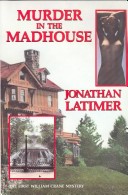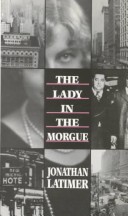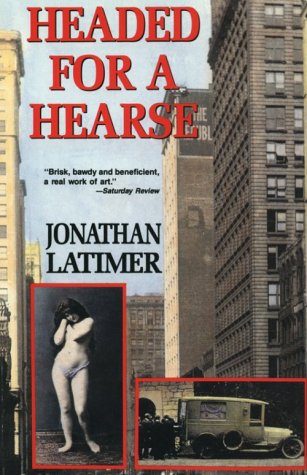Murder Room
7 total works
In his first case, William Crane goes undercover in a private sanatorium to solve a theft, and makes no secret of the fact that he believes himself to be a great detective, even presenting himself as Edgar Allan Poe's C. Auguste Dupin.
Indeed, he manages to dazzle the picaresque staff with his feats of deductive reasoning while consuming alcohol, including martinis and absinthe, in such copious quantities the plot almost feels like filler for a cocktail menu. It comes as some surprise that he is able to stand upright, let alone perform feats of detection that would put more famous literary detectives to shame. But perform he does, and with the greatest aplomb!
One reviewer referred to the well-loved third novel in Latimer's Bill Crane series as 'rough, rowdy and rum-soaked'. And true to form, just as in his previous investigations, Crane drinks his way through his current case, that of a young suicide whose body disappears just as Crane arrives on the scene.
But is there any connection between this body, and the disappearance of a young woman from a wealthy New York family? In order to retrieve the missing body, and find the murderer, Crane must run the gauntlet of both local cops and gangsters, who believe he is implicated.
As well as a fascinating mystery, The Lady in the Morgue is packed full of atmosphere and period detail, from its opening scene in a morgue to its frank treatment of drug addiction and references to contemporary music.
'From the way her buttocks looked under the black silk dress, I knew she'd be good in bed'
So begins the most hardboiled of Latimer's novels, whose notoriety meant that it was only published in unexpurgated form in the States in 1982, 40 years after its original publication.
In this classic noir novel, St Louis private eye Karl Craven, who likes his steak rare, his liquor hard and his women fallen, arrives at the small town of Paulton to protect his wealthy client's daughter from a religious cult. He soon finds himself involved with various unsavoury characters, as well as a femme fatale named Princess, and proves more than a match for the worst of them.
With six days remaining until he goes to the electric chair for the murder of his wife, wealthy broker Robert Westland needs help, fast. He insists that he has been framed, and Bill Crane, a private detective with a method and manner all his own, must prove his client's innocence.
In a mixture of the humorous and the macabre, Crane's investigation, set against an evocative Depression-era backdrop, turns up more than a few queer characters - including a tight-lipped valet and a dypsomanic widow - who may or may not know something about who really murdered Mrs Westland.
Perhaps it really started when scriptwriter Richard Blake, finishing last-minute revisions in the early hours of the morning, found the naked blonde on his driveway. Nobody ever saw her again, but she turned out to be a vital clue.
The movie's fading star is Caresse Garnet, a woman so universally disliked that you could throw a stone in Hollywood and find somebody who hates her: the producer who knows she's box office poison but can't fire her; the ingenue whose scenes are being cut to ribbons on her instructions; the director with a wife and a love-nest ...
All these ingredients add up to a story of a murder that couldn't happen - but does.
Private detective William Crane and his constant (drinking) companion Doc Williams travel to Florida to protect millionaire Penn Essex and his sister Camelia from harm. They have been receiving threatening notes, and Camelia is eventually kidnapped and held to ransom.
Piecing clues together with the skill of two veteran jigsaw-puzzle aficionados, our heroes follow a trail of blackmail and debt through a sun-soaked landscape to a surprising conclusion.
Private eye Bill Crane is back, in his fifth and final case, working and drinking as usual with his old sidekick, Doc Williams, and a new member of the gang, Ann Fortune, who is posing as his girlfriend - and disapproves of his carousing.
The trio has been sent to a Chicago suburb to investigate a murder and death threats made to the family of an industrial magnate. Alternately impeded and abetted by the many attractive women of the family, Crane cracks the case in his own inimitable way, following a trail of clues including the perfume of gardenias, the lipstick marks on the dead man's face and the crimson cat.



